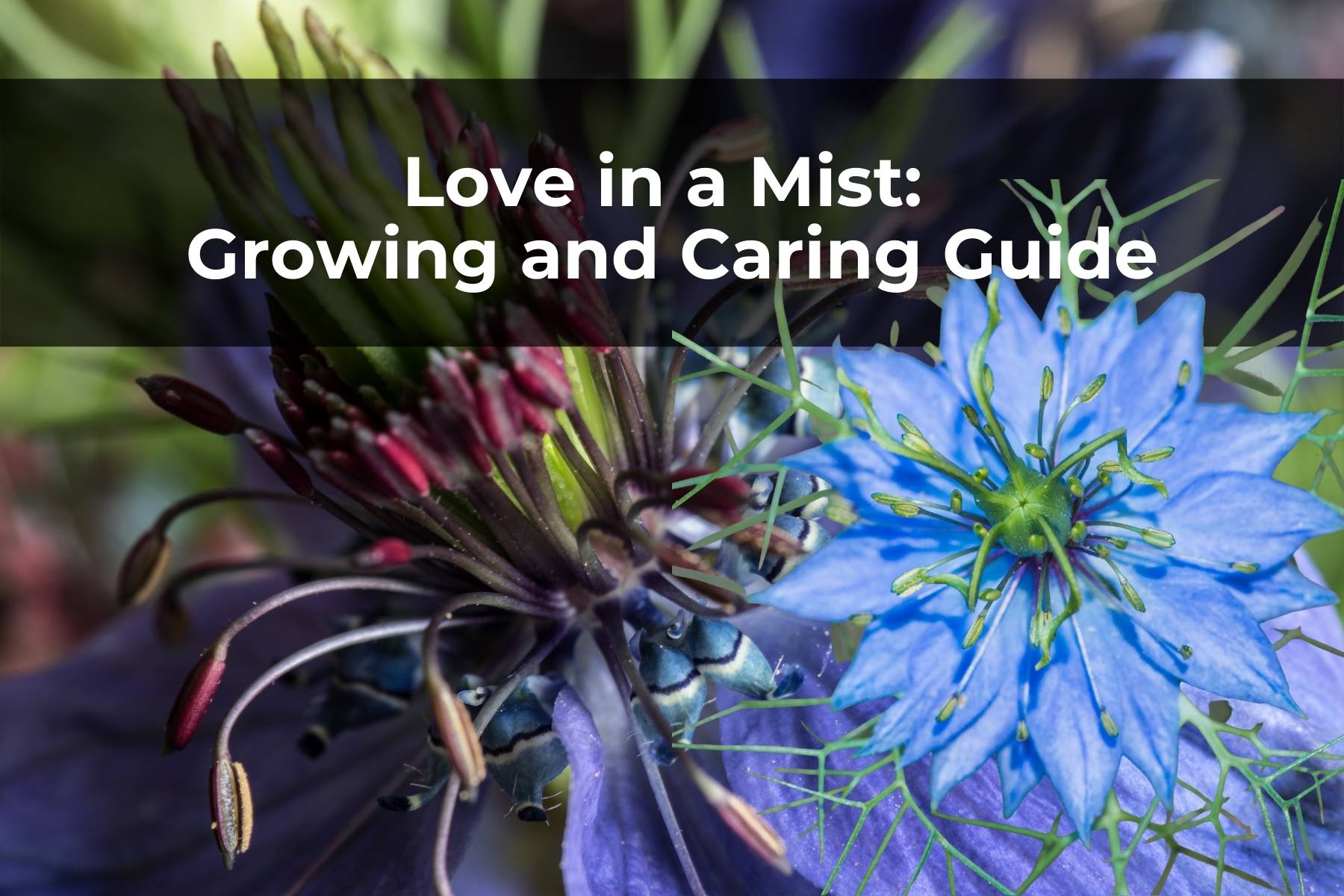Last Updated on June 12, 2023 by Real Men Sow
Love in a mist is best known for its vivid blue-blossom variety. However, there are also cultivars that can bloom in pinks, purples, and white. These adaptable flowers can be planted in spring and fall. These plants can grow up to two feet tall and will bloom for many weeks starting in late spring. You’ll be able to see the blooms all through fall if they reseed themselves.
Nigella (Nigella damascena), is known for its misty, ferny-fennel-like foliage. N. Damascena blooms will instantly make you recognize its distinctive swirl of delicate bracts and airy bracts.
Tips and Method of Planting Love in a Mist
Love-in-a-mist plants thrive in sun and loose, fertile soil. The plant will not grow well in less ideal locations, such as in partial shade, or in dry, nutrient-poor areas. These steps will help you sow Love in Mist plants.
- Plantar Organic All-Purpose compost is a great way to improve dry and nutrient-poor soils. Good potting soil will not only provide a healthy soil environment but also a balanced supply of nutrients to ensure a successful season.
- You can plant Love in Mist seeds outside starting in March. Plant the seeds 1 cm deep in soil, with a spacing of 20 cm. You can also start seeds indoors, and transplant your seedlings within the first two weeks of germination.
- After two to three weeks, the first seedlings will be visible.
- Sow new seeds every two weeks to ensure a long period of flowering from April through November.
Propagating Love in a Mist
Love-in-a-mist is an annual that doesn’t like being transplanted. It’s best to grow it from seeds. It is easy to reseed itself, and if you’re lucky enough, the seeds will overwinter in your garden and come back to life in spring.
How to Grow Love in a Mist From Seed
Direct-sowing seeds outdoors is the best way to avoid damaging roots during transplantation. You can plant seeds from the beginning of spring through the summer, and even into the fall in mild winter climates that allow the plants to overwinter.
- Sow seeds in spring when the soil temperature is 60 degrees Fahrenheit.
- Place the seeds in a sunny place. You can also rake them in. Although you don’t have to cover them with soil, they should be lightly pressed down. Light is essential for germination so cover lightly with soil.
- Keep the soil moist. The process of germinating takes between two and three weeks.
- Place thin seedlings eight to ten inches apart.
Cultivating Love in a Mist in a pot
You can grow love-in-a-mist in a pot. To avoid waterlogging, ensure that there is a drainage hole as well as a layer of coarse material like stones when you plant it in containers. Plantura Organic Flower compost is a great soil choice for potted love in-a-mist.
General Care Guide of Love in a Mist
Even though they are adaptable and hardy, love-in a-mist plants need some TLC, especially if they are potted. Nigella damascena, also known as Nigella damascena, is an annual. It will die at the end of the season. Love-in-amist is a prolific self-seeder that produces lots of seeds to grow the next year. Cut back on the love-in-a-mist plants to stop it from self-seeding.
Light
Love-in-a-mist plants will bloom in full sun. It will not bloom as well in partial shade, but it will still produce more blooms.
Soil
They do not care much about soil quality. However, it will thrive in fertile, nutrient-rich soil. The plant likes to grow in moist sandy soil in its native habitat. However, it is not fond of sitting in damp soil and prefers a neutral pH soil. Love-in-amist can be tolerant of some dry conditions, as well as other types, such as loam, clay-loam and gravel.
Water
Love-in-amist needs constant moisture. Water it slowly and deeply until the top few inches of soil is well-saturated. Pine bark mulch reduces soil water loss through evaporation. It also suppresses weeds that could choke Nigella damascena plants.
Temperature and Humidity
Plant in the spring when the soil temperature is 60°F. The plant thrives at temperatures between 65-72°F.
Fertilizer
When you plant Nigella damascena in your garden, add a general-purpose fertilizer and fertilize it every month thereafter. Follow the instructions on the product label to determine the correct amount.
Pruning
While deadheading and cutting flowers for bouquets will prolong the life of your plants, it will also cause them to stop flowering as well as destroy their beautiful seed pods. Love in a Mist self-sows easily, so thin the seedlings to avoid overcrowding. When flower buds are fully colored, or pods have developed harvest bouquets.
Drying Love in a Mist
The flowers will produce seed pods after flowering. The seeds of Nigella damascena are very decorative and can be used to make dried bouquets. This is done by cutting the stems at the base of the plant and hanging them upside-down with string to dry.
Wait until the seeds of edible love-in-a-mist turn brown before harvesting them. After harvesting, dry the seeds in a dish covered with kitchen paper. The capsules should crack at the top at this point. Then, shake the seeds on a piece of paper to remove any pests or foreign objects. Finally, store the seeds in an airtight, dry, cool place.
Is Love in a Mist poisonous or edible?
The majority of members of the buttercup family are poisonous, including Love in a Mist. However, Nigella damascena is considered to be slightly poisonous. However, it is best to not eat the entire plant. Children and pets should be cautious when eating the whole plant.
Love-in-a-Mist seeds, on the other hand, are edible and have a nutmeg-like flavor when finely ground. This spicy flavor is great in sweets and condiments. You should never eat too many seeds, as they contain the toxic alkaloid damascening.

